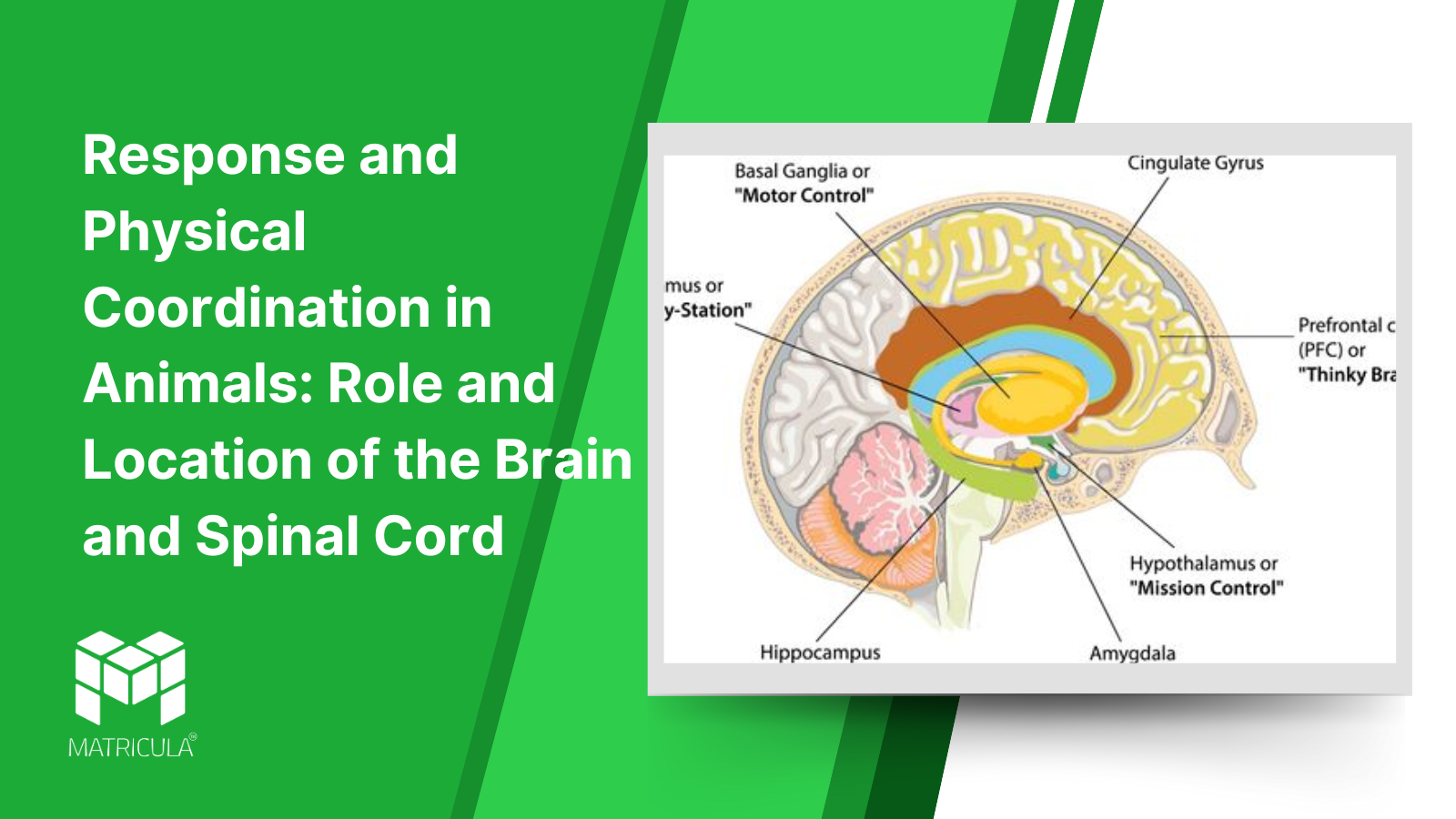Response and Physical Coordination in Animals: Role and Location of the Brain and Spinal Cord
Introduction The nervous system plays a vital role in coordinating the body’s responses to various stimuli. In animals, the brain and spinal cord form the central nervous system (CNS), which regulates movement, reflexes, and vital functions. Understanding the structure and functions of different parts of the brain and the spinal cord is crucial for grasping how organisms respond and coordinate their physical activities.
Role and Location of the Brain The brain is the primary control center of the body, responsible for processing sensory information, controlling motor functions, and managing cognitive activities. It is located inside the skull and protected by the bony cranium and cerebrospinal fluid. The brain is divided into various parts, each with specific functions:
1. Cerebral Cortex
- Location: Outermost layer of the brain.
- Role: The cerebral cortex is involved in higher-order brain functions such as thinking, memory, learning, perception, and voluntary movements. It is divided into two hemispheres, each controlling the opposite side of the body.
2. Thalamus
- Location: Situated deep inside the brain, just above the brainstem.
- Role: The thalamus acts as a relay station, transmitting sensory signals to the cerebral cortex. It helps regulate sleep, alertness, and consciousness.
3. Hypothalamus
- Location: Below the thalamus and above the pituitary gland.
- Role: The hypothalamus controls body temperature, hunger, thirst, and emotional responses. It also manages the endocrine system through the pituitary gland.
4. Midbrain
- Location: Located between the thalamus and pons.
- Role: The midbrain controls visual and auditory reflexes and helps regulate muscle movements.
5. Pons
- Location: Located below the midbrain and above the medulla oblongata.
- Role: The pons connects various parts of the brain and is involved in regulating breathing and communication between different brain regions.
6. Cerebellum
- Location: Located at the back of the brain, beneath the occipital lobe.
- Role: The cerebellum controls balance, posture, and coordination of voluntary movements.
7. Medulla Oblongata
- Location: Found at the lower part of the brainstem, connecting the brain to the spinal cord.
- Role: The medulla oblongata controls involuntary functions such as heartbeat, breathing, and digestion.
Role and Location of the Spinal Cord The spinal cord is a long, cylindrical structure that extends from the brainstem down the vertebral column. It acts as a communication pathway between the brain and the rest of the body. Key roles of the spinal cord include:
- Reflex Actions: The spinal cord is responsible for automatic responses such as the knee-jerk reflex.
- Signal Transmission: It carries sensory information from the body to the brain and motor commands from the brain to the body.
- Coordination of Movements: The spinal cord plays a critical role in coordinating walking, posture, and balance.
Conclusion The brain and spinal cord work together to ensure smooth coordination and response to environmental stimuli. Each part of the brain has a specialized role in maintaining bodily functions, while the spinal cord ensures efficient communication between the CNS and peripheral organs. Understanding their structure and functions is crucial in biology education, especially for students studying the West Bengal Board curriculum.


